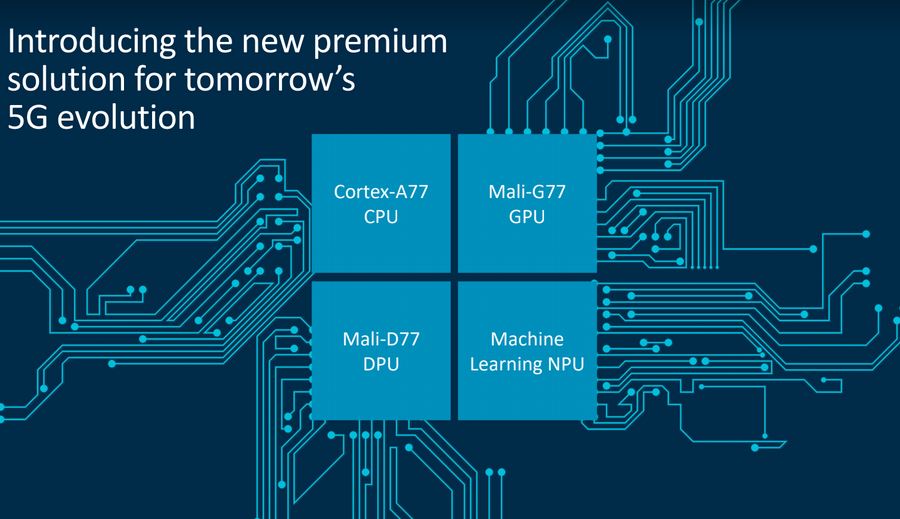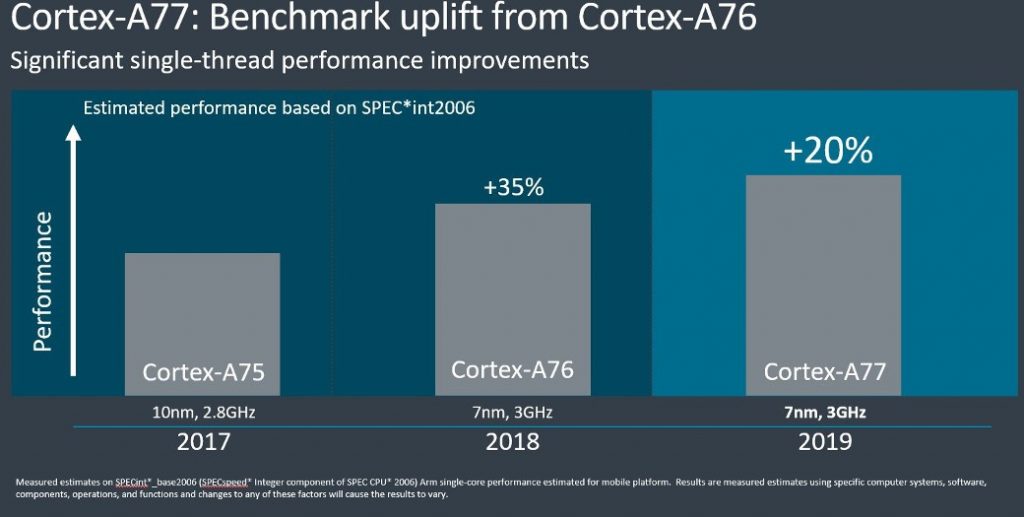
ARM today has announced its new premium CPU design, GPU design and Mobile IP based on the all-new Valhall architecture and a new machine learning (ML) processor. The new Cortex-A77 CPU, Mali-G77 GPU, and Machine Learning IP promise to offer 60 percent faster AI performance on smartphones. These are the successor to Cortex-A76 CPU, Mali-G76 GPU and Mali-V76 VPU launched last year.
Cortex-A77 CPU

ARM Cortex-A77 is the successor to Cortex-A76 CPU and the company calls it the third generation DynamIQ ‘big’ core CPU. The A77 is supposed to provide a 20% IPC performance improvement over Cortex-A76 and also provide a significant performance boost for next-generation devices. The new CPU also claims to offer 35 times faster more Machine Learning performance and 15 percent plus more memory bandwidth improvements than the old Cortex-A76.

Key features of Cortex-A77
- Armv8.2 architecture
- AArch32, and AArch64 support
- 64KB L1 I/D caches
- 256KB and 512KB private L2 cache, and up to 4MB shared L3 cache.
Mali-G77 GPU

ARM also unveiled their new Mali-G77 GPU design alongside the new CPU design and Machine Learning IP. Mali-G77 GPU is built on the new Valhall architecture which replaces the Bifrost architecture used in the GPUs earlier. This new GPU claims to deliver nearly 40 percent increase in performance improvement, a 30 percent increase in performance density, 30 percent energy efficiency improvements, and a 60 percent improvement for ML over the previous devices with Mali-G76.
According to the company, the quad texture mapper which provides four texels/cycles attributes to the improved gaming performance of Mali-G77 GPU and has a large impact on texture heavy games.
Machine Learning processor
The company announced its Project Trillium last year and since announcing it, the company has managed to bring enhancements to their ML processor including increasing energy efficiency by more than 2x up to 5 TOPs/W, improving memory compression techniques up to 3x, and scaling to peak next-generation performance up to 8-cores for up to 32 TOP/s.
The new CPU and GPU designs from ARM will start shipping on the next generation devices and it will also depend on the chip manufacturers like Qualcomm, Samsung and others implementing the technology in processors.
Commenting on this, ARM said:
Every new smartphone experience begins with more hardware performance and features to enable developers to unleash further software innovation. For developers, the CPU is more critical than ever as it not only handles general-compute tasks, as well as much of the device’s ML compute which must scale beyond today’s limits. The same holds true for more immersive untethered AR/VR applications, and HD gaming on the go.
